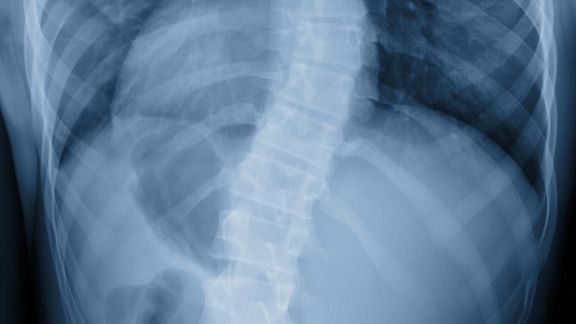June is Scoliosis Awareness Month. Just a few facts for you to be aware of.
Facts about scoliosis
- Scoliosis is prevalent, affecting about 3% of the population in the US.
- It is the most common spinal deformity.
- In the vast majority of cases, scoliosis has no identifiable cause—this is termed idiopathic scoliosis.
- It usually starts between the ages of 10 to 15, though is is also possible to have scoliosis as an infant or to develop scoliosis as an adult.
- Scoliosis is diagnosed both males and females.
- Females are significantly more likely to have scoliosis curves that progress and need either bracing and/or surgery to reduce the curvature.
- Any type of hump or uneven appearance around the area of the rib cage
- Any side-to-side asymmetry in the spine
- Shoulders that appear to be different heights
- One hip that sticks out more prominently than the other
In recent years, treatment for scoliosis has made significant advances. Both bracing and surgery are more effective and less invasive than in the past.
Early diagnosis of scoliosis is important
Diagnosing scoliosis in its early stages ensures the most options for treating the curvature and slowing or stopping the progression. Children's bones are not yet fully hardened so non-surgical treatments like bracing may be used to prevent progression of the curvature.
In severe cases, bracing may also be useful in delaying the need for surgery until the child is older and his or her bones are more developed.
Scoliosis screenings
Many students are given the Adam’s Forward Bend Test in school, typically when they are in 5th or 6th grade, to determine whether or not they may have scoliosis. However, many schools do not do these screenings, so it is advisable to make sure the screening is done as part of a child's annual physical exam with the pediatrician.
In the Adam's Forward Bend Test, the student bends forward at the waist with arms hanging downward toward the floor and knees straight while being observed by a health care professional. This bending forward position most clearly shows any asymmetry in the spine and/or trunk. The health care professional looks for an abnormal appearance in the spine, hips, and shoulders, such as:
What should you do if you suspect you or your child has scoliosis?
Make an appointment to have your child evaluated by a physician. If the initial physical exam m shows an abnormal spinal curve, the doctor will probably order an X- ray or MRI scan to assess the degree of the curvature.
While rare, it is possible for untreated scoliosis to progress and potentially to lead to more serious complications, such as the potential for chronic pain and/or restricted activity. To prevent complications for scoliosis, early detection and treatment are essential.




No comments:
Post a Comment